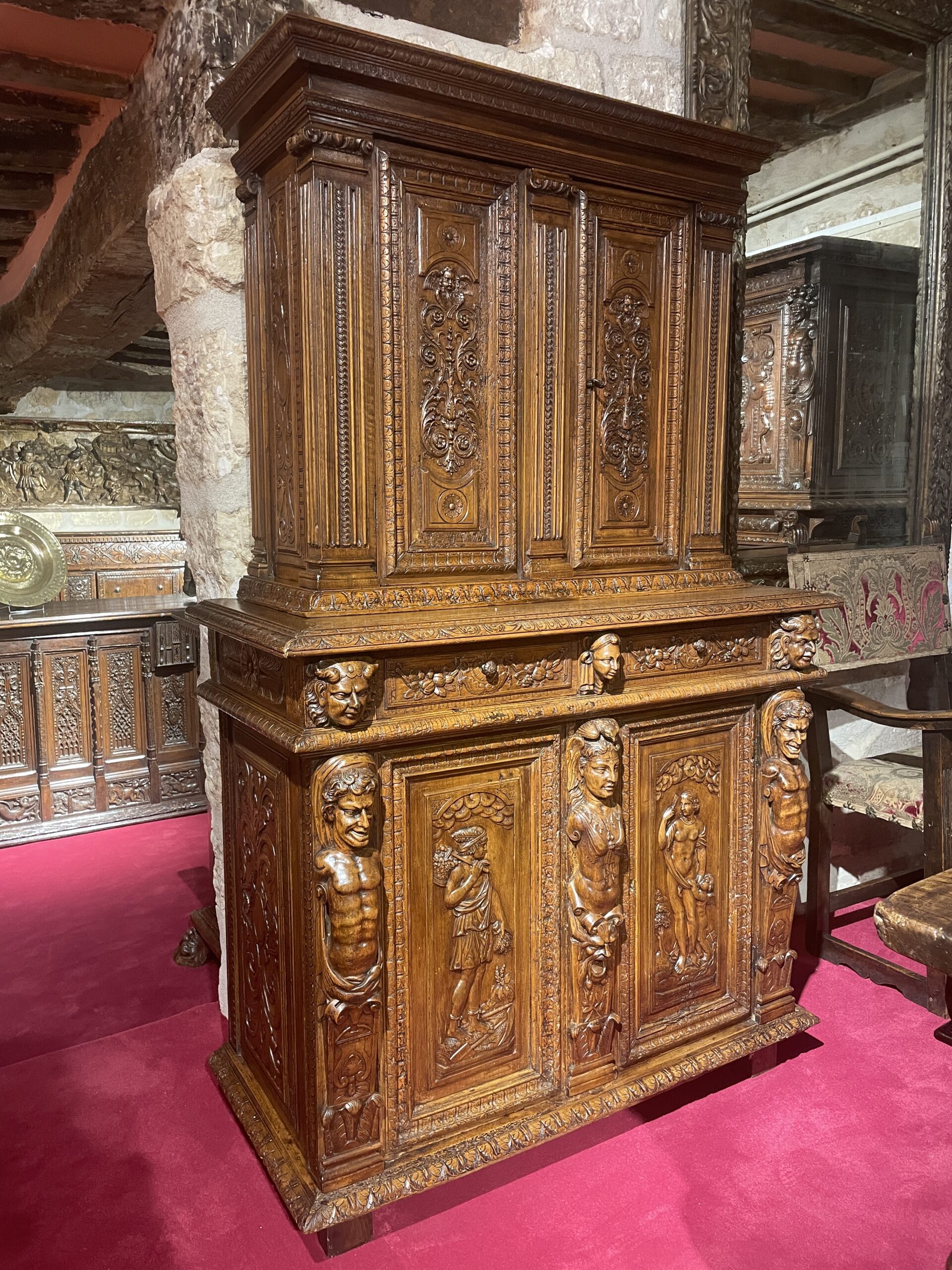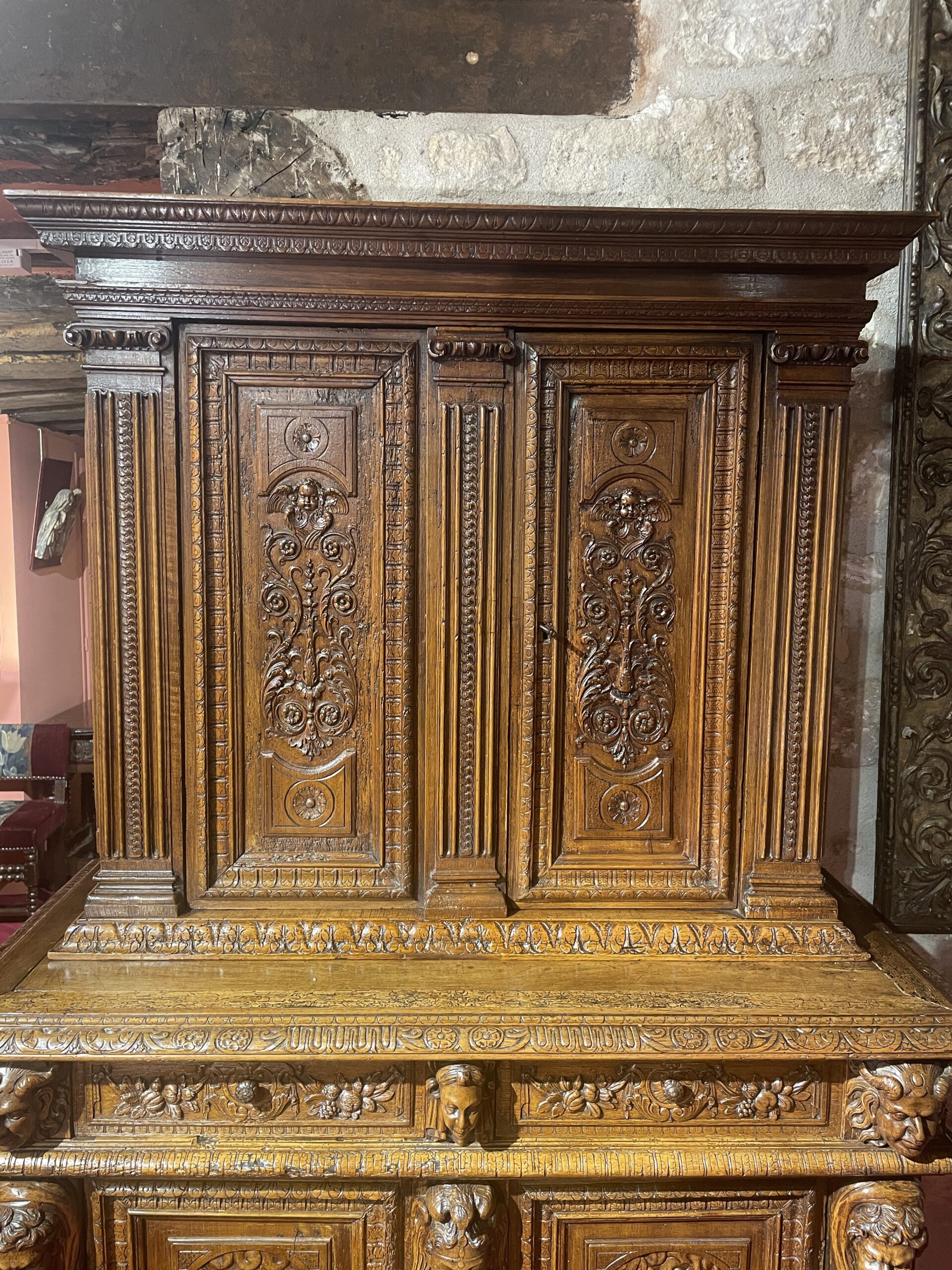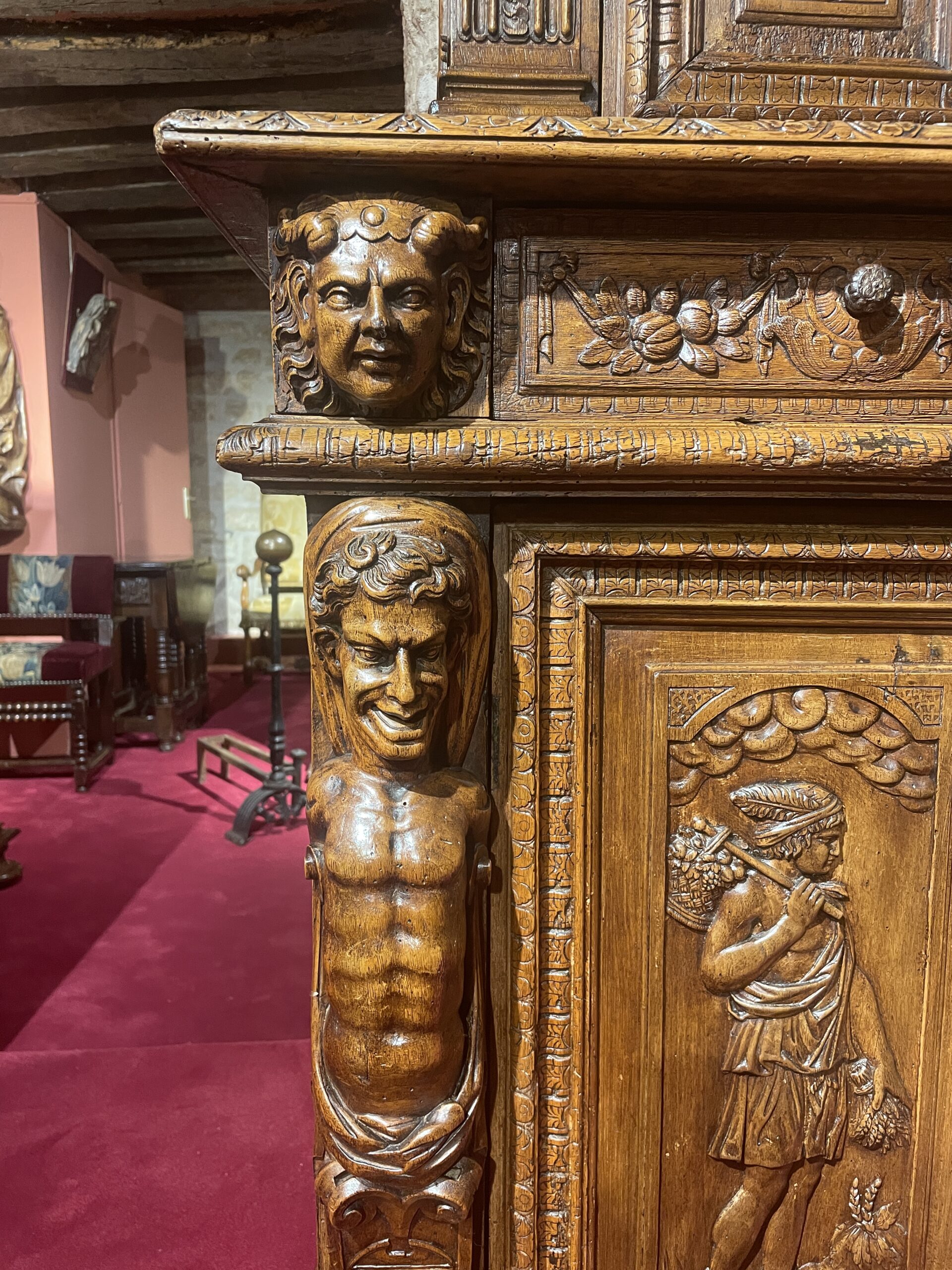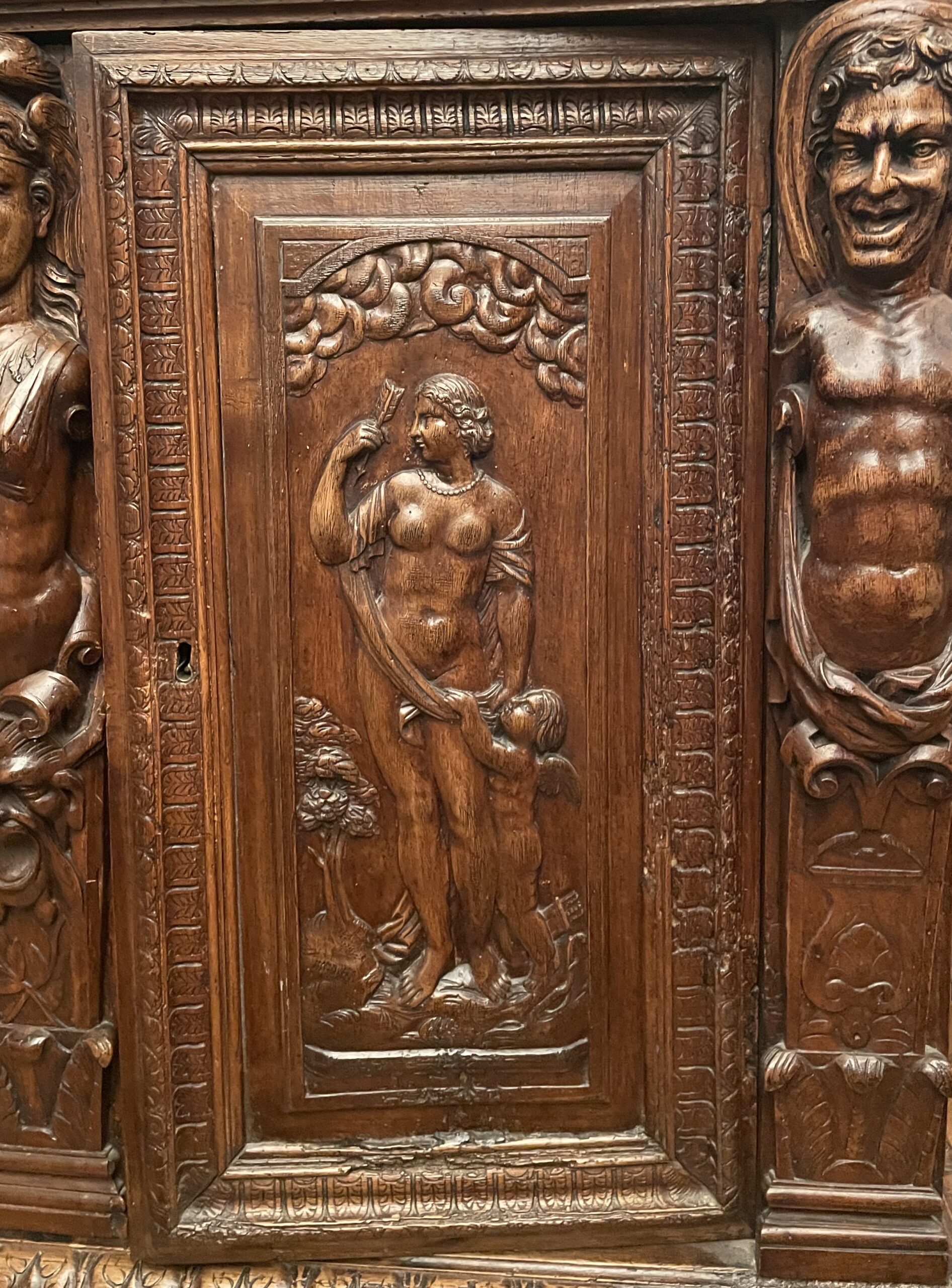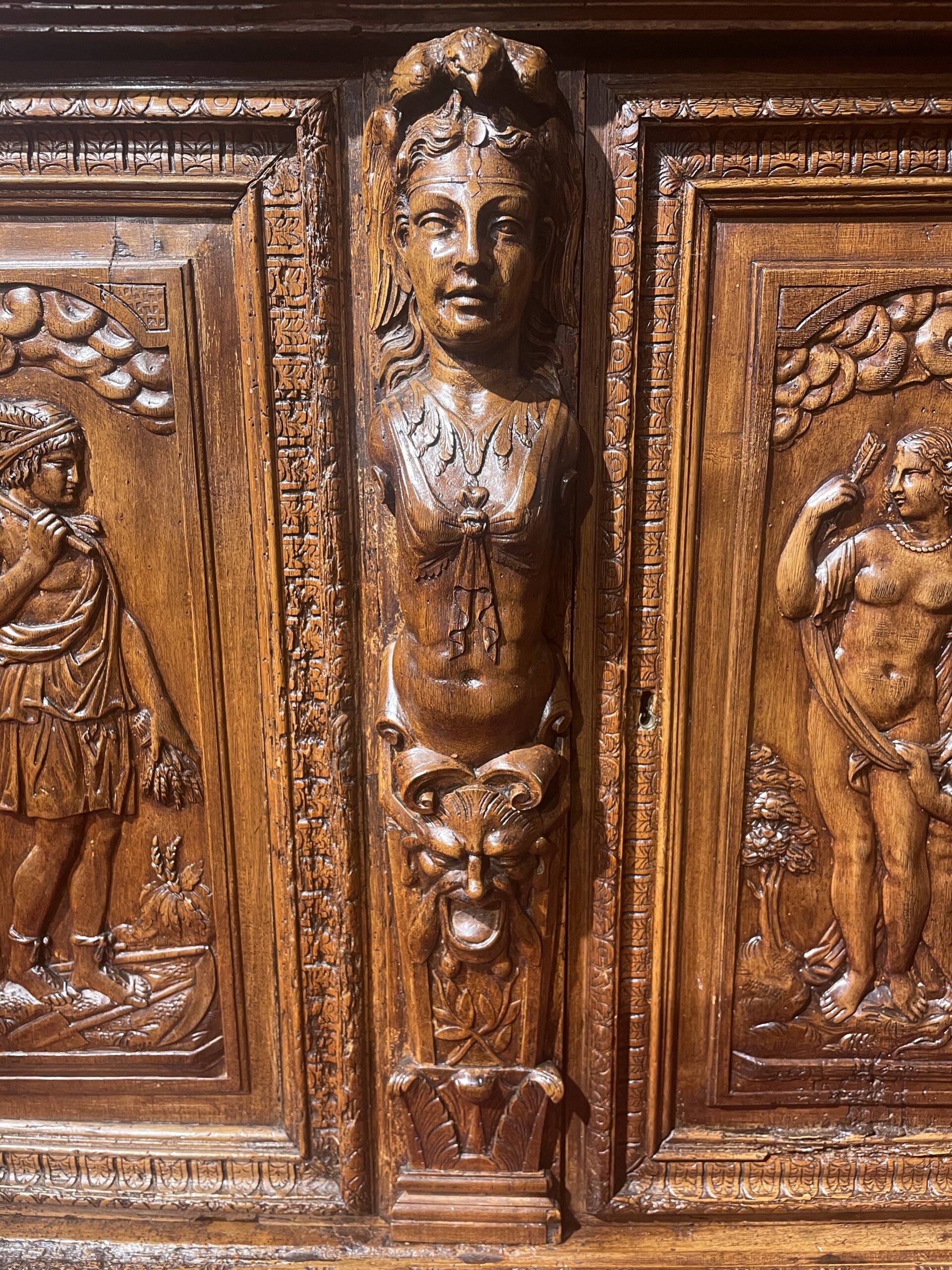Description
This two-part cabinet, crafted from carved walnut and set back slightly, is a jewel of ornamentation. The harmony of proportions and the rigor of the structure, reflecting the keen interest in a meticulous study of antique architecture, are matched only by the variety of its ornamentation and the exceptional delicacy of its compositions.
The lower body
The lower body rises on a molded base adorned with stylized shells. Scattered with three uprights adorned with strong-featured caryatids, it opens with two doors whose panels, assembled with mitered joints, are dovetailed into richly molded frames of bird feathers and acanthus leaves on the sides.
On the left door, under a sky with billowy clouds, we find the personification of Summer with Mars. He wears a plume fitted to his headband, reminiscent of the Renaissance taste for depictions of Indians. He carries a basket of fruit on his shoulder and a sheaf of wheat in his hand. At his feet, we find his tools, namely a shovel and a sickle. The word ‘`Mars’ derives from the Etruscan god of agriculture, Maris. Mars is indeed also the god of agriculture, fertility, and vegetation.
On the right door, we have the personification of Spring depicted as Venus accompanied by Cupid. Wrapped in a veil, she holds the arrow in her hand while the child plays with her garment.
The doors are flanked by two male terms in draperies, sculpted in high relief, with grimacing faces and well-defined musculature, characteristic of Hugues Sambin’s Cabinets. In the center, a female figure with long hair, in bust, adorned with a necklace and a fibula, winged and wearing an eagle headdress, surmounts in a coiling of leather, a satyr mask.
The richly decorated belt consists of two drawers crowned with a frieze of rounded leaves, from which garlands of fruits emerge, held by draperies, starting from a shell serving as a grip. The drawers are flanked by two satyrs with prominent horns and separated in the center by a female face wearing a gracefully tied veil and a pleated collar, contrasting with the other two with its fine and delicate features. The belt continues onto the sides of the cabinet with cartouches featuring feather and rosette motifs.
Upper Body
Seated on a molding with heart-shaped motifs, the upper part opens with two doors with carved panels. In the center of a cartouche adorned with two rosettes, a Burgundian cabbage with profusely flowering scrolls is affirmed, surmounted by a cherub’s head. Each door is crowned with molded friezes with convex and concave palmette motifs. The panels are flanked by pilasters with prominent fluting with a median braid, ending in egg-shaped capitals, continuing on the sides of the cabinet.
The entablature rises to the cornice in a series of intricately worked molded friezes, ending in rows of hearts.
The sides are not overlooked with long flat-carved frames of lyre scrolls surrounding a mirror, typically Lyonnaise in motif.
This cabinet is a masterpiece in more than one way:
Firstly, we can identify our piece as a Marriage Cabinet symbolizing the solidity of the couple with Mars and Venus facing each other, depicted in the lower part.
Secondly, the exceptional quality of the sculpture, the harmony of the well-structured composition, as well as the presence of specific terms of Burgundian art from the second half of the 16th century, allow it to be considered as a piece “in the manner of Hugues Sambin,” where ornamental profusion leaves no room for emptiness.
It should also be noted that the imagers were not directly inspired by Italy but by French or Flemish engravings that disseminated a masterful ornamental repertoire.
Finally, the overall architectural composition of the piece, the Lyonnais scrolls, and the fine ornamental details argue for a commission to a Burgundian-Lyon workshop, where the vitality of the workshops owes much to Hugues Sambin and his school.
Bibliography :
Jacqueline BOCCADOR, Le mobilier français du Moyen-âge à la Renaissance, Ed Monelle Ayot, Paris, 1988
Jacques THIRION, Le mobilier du Moyen-Âge et de la Renaissance en France, Dijon, 1998.

